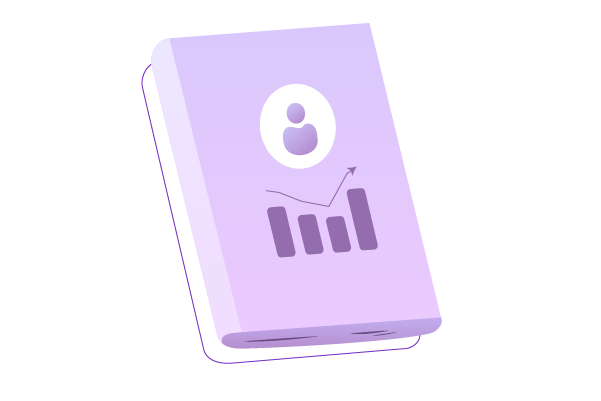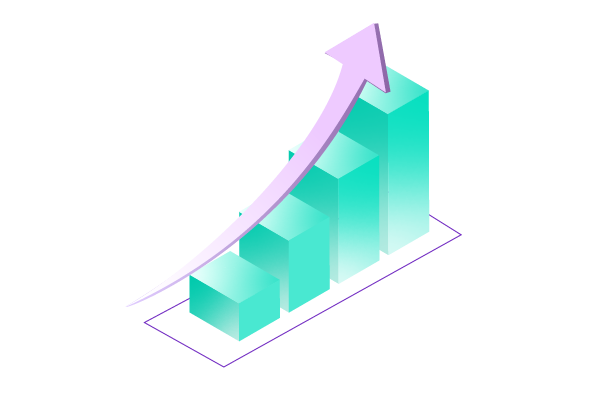
Market makers, often functioning behind the scenes, ensure that financial markets function efficiently and that trading can occur without disruptions. They are the bridge between buyers and sellers, providing the much-needed liquidity that allows participants to enter and exit positions with ease. Without market makers, markets would be far more erratic, with erratic price fluctuations and diminished opportunities for traders and investors.
The role of market makers is often overlooked, but it’s one of paramount importance. This article will delve into market makers. As technology and market dynamics continue to evolve, the landscape in which market makers operate has been continually reshaped, requiring them to adapt and innovate to maintain their crucial role.
Overview of Market Maker Role

Market makers are serving as pioneers of market stability. Their primary function is to provide liquidity, which is the ability to quickly buy or sell an asset without causing significant price fluctuations. They stand ready to both buy and sell a particular financial instrument, thereby facilitating the trading process. Market makers participate in a wide array of markets, including stocks, commodities, foreign exchange, and the ever-evolving realm of cryptocurrencies. Without them, trading would be less efficient, and markets would be more susceptible to wild price swings.
Liquidity is the lifeblood of financial markets. It’s what allows investors and traders to enter or exit positions at will, shaping the very essence of market dynamics. The presence of market makers ensures that there are readily available buyers when someone wants to sell and sellers when someone wants to buy. This availability of counterparties at all times promotes market efficiency, as traders can act swiftly without causing drastic price movements. In contrast, illiquid markets, lacking active market makers, are prone to price spikes and abrupt downturns, making trading more challenging and riskier.
Market makers play a critical role in ensuring that markets remain orderly and efficient. Their presence is akin to the oil that lubricates the wheels of financial transactions, allowing for smoother trading experiences for everyone involved.
Market makers typically operate behind the scenes, quietly working to maintain market order and liquidity. While traders and investors see the bid and ask prices displayed on their screens, it’s the market makers who provide these quotes. When you place a market order to buy or sell, a market maker is on the other side of that transaction, ready to fill your order promptly.
Also Read: Market Making: Strategies and Techniques (August 2023)
This behind-the-scenes role often means that market makers assume significant risks. They must continually adjust their positions to align with market conditions and ensure there are ample buyers and sellers at the prices they quote. These adjustments require astute judgment, advanced technology, and a deep understanding of market dynamics. Market makers are akin to skilled architects, constructing a stable and efficient trading environment by simultaneously managing risk and providing liquidity.
The role of market makers has evolved significantly over time, especially with the advent of technology and the proliferation of electronic trading platforms. In the past, market makers operated mainly on traditional trading floors, relying on human judgment and interaction to make quick decisions. However, the digital revolution has brought automation and algorithmic trading to the forefront. Market makers now harness the power of technology to execute their trades swiftly and efficiently. Electronic trading platforms have replaced chaotic trading floors, enabling market makers to operate seamlessly across a vast range of financial markets. The shift to automation has not only enhanced their operational efficiency but has also brought a new level of competitiveness into the realm of market making.
With the rise of high-frequency trading (HFT), market makers have had to adapt to the ever-accelerating pace of financial markets. HFT involves executing trades in fractions of a second, requiring even more advanced technology and risk management techniques. This evolution reflects the resilience and adaptability of market makers in the face of changing market dynamics.
How Market Makers Gain Profit?

Market makers are not altruistic; they’re in the business to make a profit. Let’s take a closer look at the various strategies they employ to achieve this:
1. Bid-Ask Spread
At the heart of a market maker’s profit model lies the bid-ask spread, a concept that may seem deceptively simple but holds immense significance. Market makers make money through this spread, which is the difference between the buying (bid) and selling (ask) prices of an asset. They offer to buy at a slightly lower price than they are willing to sell, pocketing the difference as their profit.
While the profit per trade may appear modest, it’s essential to remember that market makers execute a large number of trades. Each trade contributes to their earnings, and this can accumulate into substantial profits over time. The bid-ask spread, which seems minute on a per-trade basis, becomes a powerful source of income due to the volume of transactions that market makers handle.
2. Volume and Frequency
Market makers thrive on high trading volumes and frequent transactions. Their profit doesn’t depend on significant price fluctuations but, instead, on the sheer number of trades they execute. This necessitates cutting-edge trading technology and swift order execution. Market makers need to be lightning-fast in their operations, enabling them to profit from the multitude of trades they facilitate.
To remain competitive, market makers continually invest in technology and infrastructure that allow them to process a high volume of orders with precision and speed. The sheer number of transactions they handle requires a well-oiled machine that can efficiently process orders, manage positions, and adjust prices to accommodate market changes.
3. Arbitrage
Market makers are astute at recognizing arbitrage opportunities, a skill that requires keen observation and rapid decision-making. Arbitrage involves capitalizing on price differences between various markets or exchanges. For example, if an asset is trading at a lower price on one exchange and a higher price on another, market makers can buy low on one exchange and sell high on another, capturing the price spread as profit.
However, arbitrage requires quick execution, as price disparities often close rapidly. Market makers must act swiftly to capitalize on these opportunities. They leverage their technology and expertise to monitor multiple markets and execute trades in a fraction of a second, ensuring that they can take advantage of arbitrage opportunities before they vanish.
4. Hedging
To manage risk, market makers frequently employ hedging strategies, an intricate balancing act that requires them to take offsetting positions in related instruments to neutralize potential losses. While this practice might compress profit margins, it acts as an insurance policy against adverse price movements. For instance, if a market maker has a large long position, they may hedge by taking a short position in a related instrument.
This way, any losses in one position may be offset by gains in the other, providing stability in the face of market fluctuations. Hedging requires sophisticated risk assessment and a deep understanding of market correlations. Market makers meticulously analyze the relationships between different instruments and use this knowledge to strategically implement hedging positions to minimize overall risk.
These strategies collectively form the bedrock of market makers’ profit-generation techniques. Each strategy requires meticulous planning, rapid execution, and a deep understanding of market dynamics. Market makers constantly fine-tune their approach, seeking a delicate balance between profit-seeking and risk management.
Market makers operate at the intersection of profitability and market stability, serving as the unsung heroes of financial markets. Their strategies, including bid-ask spreads, high trading volumes, arbitrage, and risk management techniques, allow them to navigate the complexities of market dynamics while maintaining the vital role of liquidity providers. While their methods may seem complex, they play an indispensable part in maintaining market order and ensuring that trading remains a smooth and efficient process.
Market Makers Risk Management Techniques

Market making is not without risk, and market makers employ various techniques to protect themselves. These risk management strategies are crucial for ensuring their long-term viability in the financial markets:
Position Limits
Market makers operate within the boundaries of predefined position limits. These limits are meticulously set to prevent them from taking excessively large positions that could expose them to significant risk. By defining position limits, market makers establish a safety net, preventing them from overextending themselves in any single asset or market.
This discipline is fundamental to their success, as it allows them to navigate market fluctuations with a level of predictability. By maintaining a firm grip on their positions, market makers ensure that their operations remain robust and resilient in the face of market turbulence.
Automated Trading Algorithms
Quick and accurate decision-making is paramount. Many market makers employ sophisticated automated trading algorithms to monitor market conditions and execute trades. These algorithms are finely tuned to continuously analyze vast datasets and historical market information, enabling market makers to make split-second decisions.
Automation doesn’t just expedite their operations; it also minimizes the margin for error and enhances precision. With automated algorithms, market makers can assess market movements, execute trades, and manage risk more efficiently than manual trading would allow. These algorithms are the heartbeat of market making operations, consistently adapting to market dynamics.
Also Read: Market Maker Options: Definition and How They Make Money
Diversification
Diversification is a fundamental risk management strategy for market makers. It’s akin to a pillar of stability that upholds their operations. Market makers intentionally spread their portfolios across a diverse range of assets and markets. By doing so, they reduce the impact of adverse price movements on a single asset or market.
acts as an insurance policy against the unpredictability of financial markets, providing market makers with stability and financial resilience. While one asset or market may experience turbulence, another may provide opportunities for profit, thus balancing their overall portfolio.
Real-Time Risk Assessment
Continuous monitoring of market conditions and real-time risk assessment are the guardians of profitability for market makers. They must remain vigilant and adapt quickly to changing market dynamics. In an environment where even a fraction of a second can make a difference, real-time risk assessment is vital.
Market makers are armed with cutting-edge tools and technology that provide them with instantaneous insights into market movements. They use this information to assess potential risks and adjust their positions accordingly to stay profitable and mitigate any threats to their portfolios. Real-time risk assessment is a dynamic process that allows market makers to remain resilient in the face of unexpected market events, providing a layer of protection against adverse price movements.
It’s important to recognize that while market makers are adept at seeking profit, their risk management strategies are equally sophisticated. The balance between profit generation and risk mitigation is the fulcrum upon which market makers operate. This will ensures they can continue to play their crucial role in financial markets by facilitating trading, enhancing liquidity, and stabilizing market order.
Market makers operate in a complex realm where profit-seeking and risk management coexist. Their intricate strategies, including setting position limits, employing automated trading algorithms, diversifying portfolios, and conducting real-time risk assessments, form the foundation of their ability to navigate the challenges of financial markets. While their methods may seem complex, market makers play an indispensable role in maintaining market stability, promoting efficient trading, and ensuring the orderly functioning of financial markets.
Conclusion
Market makers are the unsung heroes of financial markets, ensuring liquidity and enabling smooth trading. Their profitability relies on the bid-ask spread, high trading volumes, arbitrage opportunities, and risk management techniques.
Market makers are the linchpins that hold the gears of trading together. They provide the necessary liquidity for markets to function, balance their profit-seeking endeavors with meticulous risk management, and continue to evolve in a world of fast-paced technological advances. Their role is a testament to the harmony between profit generation and market stability, proving that even in the face of complexity, market makers are indispensable contributors to the efficiency and order of financial markets.
Disclaimer: The information provided by Quant Matter in this article is intended for general informational purposes and does not reflect the company’s opinion. It is not intended as investment advice or a recommendation. Readers are strongly advised to conduct their own thorough research and consult with a qualified financial advisor before making any financial decisions.

I craft stories that make complex ideas clear. I simplify the blend of data science, machine learning, and crypto trading, showcasing how advanced tech and quantitative models analyze data for informed trading choices. Join me in exploring the realm of quantitative trading, where my narratives make intricate concepts easy to grasp.
- Alifia Berizkyhttps://quantmatter.com/author/alifia-berizky/
- Alifia Berizkyhttps://quantmatter.com/author/alifia-berizky/
- Alifia Berizkyhttps://quantmatter.com/author/alifia-berizky/
- Alifia Berizkyhttps://quantmatter.com/author/alifia-berizky/
